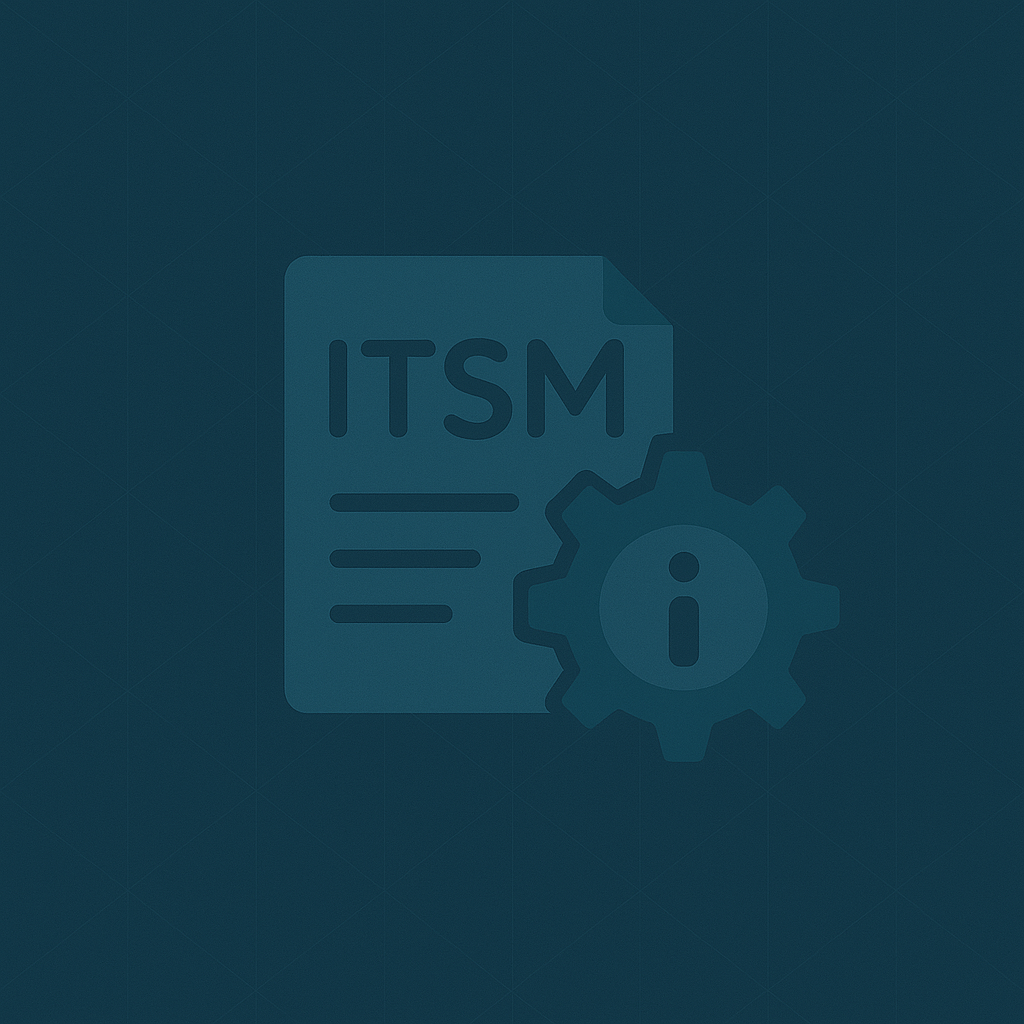
Introduction
In today's digital age, effective IT Service Management (ITSM) is critical for organizations to deliver high-quality IT services and support to their customers and users. ITSM encompasses a set of best practices, processes, and tools designed to optimize the delivery, management, and support of IT services. Let's delve into the world of ITSM and explore its key components and benefits.
Understanding ITSM:
ITSM is a holistic approach to managing IT services throughout their lifecycle, from design and implementation to operation and improvement. It focuses on aligning IT services with the needs of the business, enhancing efficiency, and delivering value to customers and stakeholders. At its core, ITSM aims to ensure that IT services are delivered consistently, reliably, and cost-effectively.
Key Components of ITSM:
- Service Desk: The central point of contact for users to request IT support, report incidents, and seek assistance. The service desk plays a crucial role in managing and resolving IT-related issues in a timely manner.
- Incident Management: The process of identifying, prioritizing, and resolving incidents to minimize disruption to business operations. Incident management aims to restore normal service operation as quickly as possible and mitigate the impact on users.
- Change Management: The process of planning, reviewing, and implementing changes to IT infrastructure, systems, and services in a controlled manner. Change management helps minimize the risk of disruptions and ensure that changes are aligned with business objectives.
- Problem Management: The process of identifying, analyzing, and resolving the root causes of recurring incidents to prevent future disruptions. Problem management focuses on addressing underlying issues and improving the overall stability and reliability of IT services.
- Service Level Management: The process of defining, negotiating, and managing service level agreements (SLAs) to ensure that IT services meet the agreed-upon levels of performance and availability. Service level management involves monitoring service performance, conducting regular reviews, and making adjustments as needed to meet customer expectations.
Benefits of ITSM:
- Improved Service Quality: ITSM helps organizations deliver high-quality IT services that meet the needs of customers and users.
- Enhanced Efficiency: By standardizing processes and workflows, ITSM reduces manual effort, minimizes errors, and improves productivity.
- Better Alignment with Business Goals: ITSM ensures that IT services are closely aligned with the strategic objectives and priorities of the business, driving value and innovation.
- Increased Customer Satisfaction: By providing timely and effective support, ITSM enhances the overall customer experience and satisfaction.
- Cost Savings: ITSM helps organizations optimize resource utilization, reduce downtime, and minimize IT-related costs, resulting in significant cost savings over time.
Challenges and Considerations
Practices can present challenges. These may include resistance to change, lack of executive buy-in, limited resources, and cultural barriers. However, by addressing these challenges proactively and leveraging the right people, processes, and technologies, organizations can overcome obstacles and maximize the value of ITSM.
Future Trends in ITSM
As technology continues to evolve, the future of ITSM holds exciting possibilities. Trends such as automation, artificial intelligence, cloud computing, and DevOps are reshaping the ITSM landscape and driving innovation. By embracing these trends and adopting a proactive approach to ITSM, organizations can stay ahead of the curve and deliver superior IT services that meet the evolving needs of their customers and users.
Conclusion
IT Service Management (ITSM) is essential for organizations looking to optimize the delivery, management, and support of IT services. By adopting ITSM best practices and leveraging the right tools and technologies, organizations can enhance service quality, improve efficiency, and drive business value. Whether you're a small business or a large enterprise, investing in ITSM can yield significant benefits and position you for success in today's digital world.
Call to Action
Ready to transform your IT service delivery with ITSM? Explore our range of ITSM solutions and discover how you can streamline processes, enhance efficiency, and deliver superior IT services to your customers and users. Get started today and unlock the full potential of ITSM for your organization!
Get Started